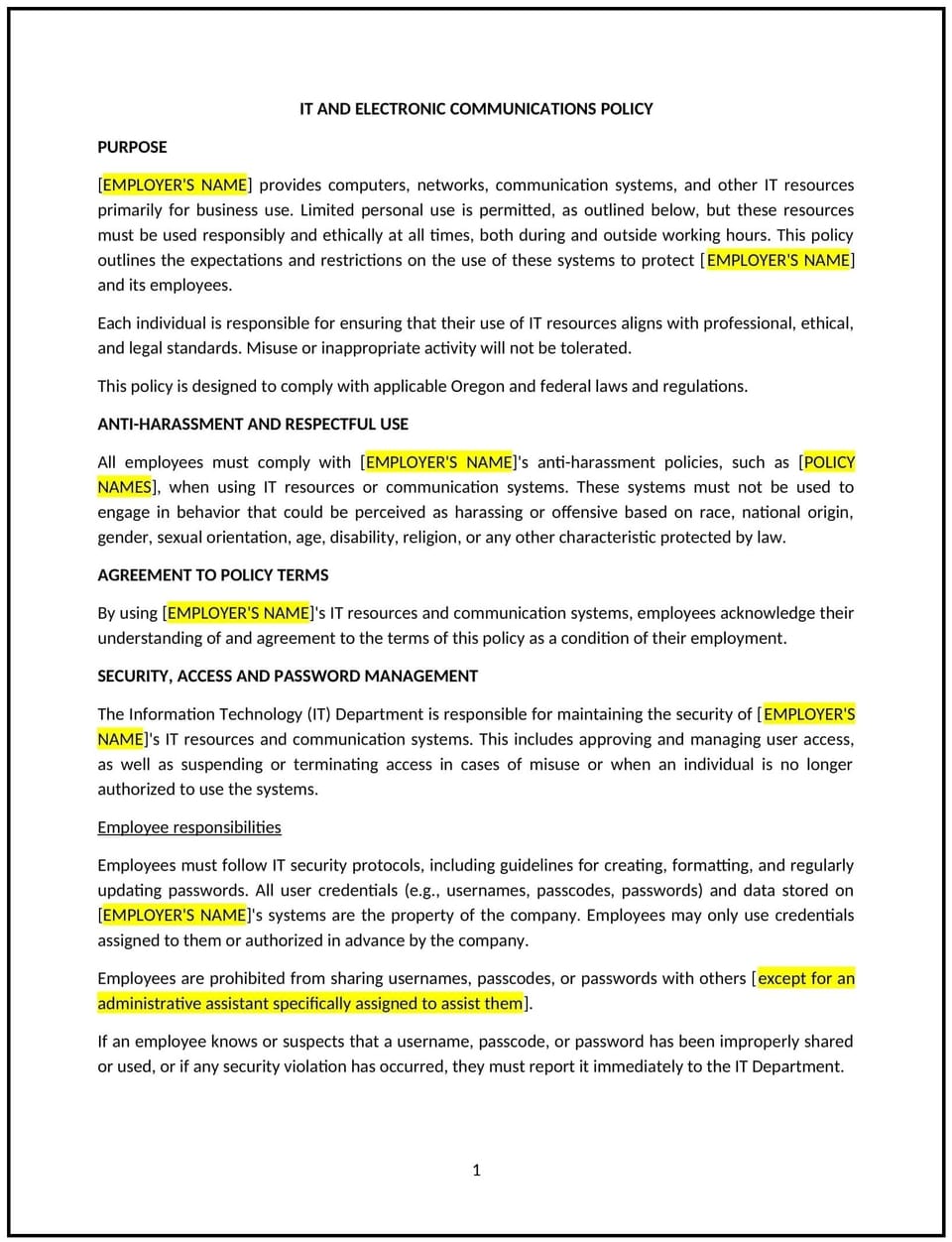IT and electronics communications policy (Oregon): Free template

IT and electronics communications policy (Oregon)
This IT and electronics communications policy is designed to help Oregon businesses establish guidelines for the use of company-provided technology, including computers, phones, and email systems. It outlines acceptable use, data security, and employee responsibilities.
By adopting this policy, businesses can protect sensitive information, ensure efficient use of technology, and align with best practices for IT management.
How to use this IT and electronics communications policy (Oregon)
- Define acceptable use: Clarify what constitutes appropriate use of company technology, such as work-related tasks only.
- Establish security measures: Outline requirements for passwords, software updates, and data encryption.
- Address personal use: Specify whether limited personal use of company technology is permitted.
- Monitor compliance: Regularly review technology usage to ensure adherence to the policy.
- Train employees: Educate staff on IT security best practices and policy requirements.
- Review and update: Assess the policy annually to ensure it aligns with evolving technology and security needs.
Benefits of using this IT and electronics communications policy (Oregon)
This policy offers several advantages for Oregon businesses:
- Protects sensitive data: Reduces the risk of data breaches and unauthorized access.
- Ensures efficient use: Promotes productivity by limiting non-work-related use of technology.
- Enhances compliance: Aligns with best practices for IT management and data security.
- Reduces legal risks: Minimizes the potential for misuse of company technology.
- Supports accountability: Clearly outlines employee responsibilities for technology use.
Tips for using this IT and electronics communications policy (Oregon)
- Communicate clearly: Share the policy with employees and include it in onboarding materials.
- Provide training: Educate staff on IT security best practices and policy requirements.
- Monitor compliance: Regularly review technology usage logs and security reports.
- Address violations promptly: Take corrective action if employees misuse company technology.
- Update regularly: Revise the policy as needed to reflect changes in technology or security threats.
Q: How does this policy benefit businesses?
A: It helps businesses protect sensitive data, ensure efficient use of technology, and reduce legal risks.
Q: Can employees use company technology for personal purposes?
A: This depends on the business’s policy. Some businesses allow limited personal use, while others prohibit it entirely.
Q: What should businesses do if an employee violates this policy?
A: Businesses should address the issue through clear communication, documentation, and, if necessary, disciplinary action.
Q: How often should employees receive IT security training?
A: Employees should receive training annually or whenever there are significant changes to the policy or technology.
Q: How often should this policy be reviewed?
A: The policy should be reviewed annually or whenever there are significant changes to technology or security threats.
This article contains general legal information and does not contain legal advice. Cobrief is not a law firm or a substitute for an attorney or law firm. The law is complex and changes often. For legal advice, please ask a lawyer.


